|
“Technology is just a tool. In terms of getting the kids working together and motivating them, the teacher is the most important. ” -Attributed to Bill Gates The NMC Horizon report has been around since 2004, published by the New Media Consortium (NMC) which is a community of hundreds of leading universities, colleges, museums, and research centers. The NMC stimulates and furthers the exploration and use of new media and technologies for learning and creative expression. Its purpose is to provide an overview as to what is on the near, medium and far horizon in regards to trends in the education sector, and is broken into three sections; they key trends, significant challenges and important developments in educational technology. Each year, the report is prefaced by something similar to the below (which has been pulled from this years Report. What is on the five-year horizon for K-12 schools worldwide? Which trends and technologies will drive educational change? What are the challenges that we consider as solvable or difficult to overcome, and how can we strategise effective solutions? These questions and similar inquiries regarding technology adoption and transforming teaching and learning steered the collaborative research and discussions of a body of 56 experts to produce the NMC Horizon Report > 2015 K-12 Edition, in partnership with the Consortium for School Networking (CoSN). The NMC also gratefully acknowledges ISTE as a dissemination partner. The three key sections of this report — key trends, significant challenges, and important developments in educational technology — constitute a reference and straightforward technology planning guide for educators, school leaders, administrators, policymakers, and technologists. It is our hope that this research will help to inform the choices that institutions are making about technology to improve, support, or extend teaching, learning, and creative inquiry in K-12 education across the globe. View the wiki where the work was produced. The 2015 NMC Horizon Report K-12 is now out, and as always provides for some interesting reading. To download the full report (free), please click here. If you are disinclined to read the full report, I have included below the summary video that has been released to provide an overview f the findings in this years edition of the K-12 NMC Horizon Report. I would encourage you to at least watch the summary video, if not read the report, and I would very much like to hear your thoughts on it. This is not just for those working within the education sector. I believe that awareness of these issues will be important for parents as they think about where they want to send their children to school over the next decade as each of the areas identified in the report come to fruition. An interesting and relatively easy to understand graphic is included on page two of the report, which I have included below. In regards to the developments in technology, I can easily see the predicted timelines playing out, as many schools have already joined the vast number of early BYOD adopters, with my own school in the process of adopting it.Makerspaces are also something that has seen a large number of early adopters both within Australia and internationally. 3D printing, which is shown in the mid-term adoption frame is on the cusp, with a small number of schools already on board (including one which I wrote about here as part of my review of the FutureSchools Conference back in March) while Adaptive Learning Technologies is something that I have heard discussed, but not in any detail. The two far term developments are thing that I would expect to be seeing in a few classrooms dotted around the world in the next two years, with widespread adoption over the next two years. The challenges that are listed up the left hand side are thing that will play a large role in determining the success or not of the implementation of the various technologies in the classroom and those issues will play out across the next few elections at State and Federal levels, with the politicians blithely promising the world and providing crumbs. They will also play out in the conversations that are held in school staff rooms around the world, as the culture of the school will play a part in whether or not various technologies are picked up and tried out, or fully implemented. I would very much like to hear what my readers think on this topic, as the use of technology in the classroom is something that I strongly believe is not going to go away, as technology becomes ubiquitous in our daily lives both at home and at work, and we need to ensure that our children are equipped to be responsible and respectful digital citizens as much as we work to ensure they are the same in the non-digital world.
0 Comments
“The smart phones and tablets that our students have now are the most primitive technology they will ever use.” – Ian Jukes The fourth and final session of the day began after the mid-afternoon break and saw Ian Jukes speaking under the title Strategies for teaching digital learners in today’s classrooms. I was looking forward to this, as based on the title, I was expecting strategies for engaging students who were otherwise disengaged. I found Ian’s talk to be like a whirlwind; fast and furious with lots to be aware of and take in. Ian started off by commenting that student expectations about learning are fundamentally changing the way in which we teach. There was little elucidation as to what, exactly, he meant by this, but it seems, intuitively, to be reasonably accurate when you take a cursory look at the way in which teachers are adopting, piecemeal, various technologies and new pedagogical techniques. Ian went on to comment that children are currently maturing, physically, at an earlier age, but that neurologically, they are maturing differently to how we, or any previous generation matured due to the constant digital bombardment to which children are now subjected, and that occurs mainly outside the school context. My generation (according to the image above which is from this article, as a 1983 baby, I’m the tail end of Generation X, or The Baby Bust generation) and those that came before me, were textual learners, wherein we learnt from the text,whether it be on the blackboard, the textbook or our own writing. Any images used in the text, were used to compliment and provide some additional information or context to the information in the text. Those born since 2000 have grown up in an age where they are constantly bombarded by digital and visual stimuli, whether it be advertisements on TV, the internet, electronic signboards at sporting events or in the cities. These advertisements, being designed by marketers to capture attention and deliver a short and sharp message, are highly visual, with limited text. Ian posits, and I’ve read articles elsewhere to support the claim, that this has resulted in the brains of today’s students being wired differently; where they seek the bulk of the information or learning from the visual communication, and only then look to the text to get some complementary information. This has an impact on teaching practices, wherein teachers now need to ‘rewire’ their pedagogical techniques to account for this. A Google search using the terms Literacy crisis yields over sixty-nine million hits, with some of the excerpts seeming to echo the shift from textual to visual, but without the realisation of what has occurred. Some of these excerpts include:
What the search results tell us is that as a society, we are yet to recognise the shift in our children’s communication preference, or understand why it has occurred. Ian talked about how the digital generation find it natural to communicate visually through images, as seen with the explosion of image-driven social media such as Facebook, Tumblr, Flickr, and Snapchat, amongst others, and that this change is what is driving the shift to visual expression, away from textual expression. From this, and I must point out that this is my inference, not what Ian said, the shift to preferencing visual communication over textual may be a partial explanation for the apparent ‘literacy crisis.’ This shift is also seen in the way in which the generations read. Mine, and those before me, traditionally read, and learned to read, in what is termed a z-pattern whilst the digital generation it seems are reading in what is termed an f-pattern. This has significant connotations for teachers when they are creating lesson plans and setting texts for reading etc, as the f-pattern appears to be more conducive to skimming, which Ian commented is fast “…becoming the new normal.” Ian provided us with some strategies for leveraging this knowledge. To get students to read the full text, he said, get a real image (a real photo, not a clip art or a stock photo) and put it in the bottom right-hand corner, and rotate it so that it ‘slingshots’ the reader back to the top of the information. This is a strategy commonly utilised in advertisements, particularly for tobacco or alcohol, where they are required to put disclaimers in the advertising. These disclaimers often appear in the bottom left or right-hand corner, above or next to which is an image that ‘slingshots’ you back to the top of the ad, wherein you’ll again be exposed to the brand name, brand logo, or brand slogan. This can be seen in the advertisement below, where the brand name is in the middle of the image with the disclaimer, consisting of two words (live responsibly) is in small font in the bottom left-hand corner. A much larger block of text, in a large-size font sits in the right hand corner, to which the western-eye, (being that we read left to right) eye is naturally drawn, above which the rippling water catches and draws the eye in, taking you back to the image in the centre. I suspect that in those countries where reading is done right to left, that the contents of the bottom corners would be switched.
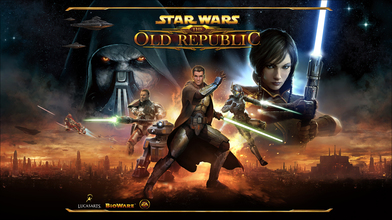 was a bit surprised by his casual dismissal of this, however, when he explained what he meant, it made perfect sense, as I have felt the same way when playing computer games. Ian stated that gamers’ are required to make a decision every half to one second and are punished or rewarded for those choices every seven to ten seconds. Anecdotally, as a gamer on various platforms and of a range of different genres, this sounds about right. This is the immediacy of reward and punishment – the instant gratification/punishment system. But note that there is also a significant amount of choice involved.The drop in gaming platform prices has resulted in many children owning their own gaming platform, whether it be console, PC, or mobile device. Many of these games offer instant gratification or rewards for doing certain things, and you gain trophies/points/upgrades and feedback about the achievement along the way. Gaming is certainly a vehicle for instant gratification. I currently own an Xbox 360 and love seeing the little icon pop up when I hit an ‘achievement’ in a game. Additionally, as someone who plays Bioware’s Star Wars: The Old Republic, I love the instant nature of, again, seeing the icon pop up that I’ve hit an achievement, or leveled up – instant gratification. Gaming also encourages delayed gratification and effort. One of the games I engage with is EA Sports' FIFA, a football/soccer game. To win the various trophies and competitions within a football/soccer season takes a significant investment of time and effort, to not only play the individual matches, but to make choices about manage the team. It also requires constant decisions-making, for which I am instantly punished or rewarded (do I pass the ball this way or that, shoot or not shoot at goal, passes intercepted, or completed, shots made or saved etc). Playing Star Wars: The Old Republic also requires a massive investment in time and effort to work my way around the various worlds, complete individual missions, solve puzzles, find objects, and collaborate with other players to take on large-scale missions and high-level enemies. All of this results in, over time, me gaining access to the highest level abilities, armour, weapons and missions. It provides delayed gratification, and finally getting to the highest level, or defeating a certain enemy that you’ve been struggling against over a period of time, and have attempted to defeat multiple times as you increase your abilities provides a huge sense of satisfaction, at finally after all this time and the choices made around tactics/weapons/abilities etc finally pay off. So whilst yes, gaming does provide instant gratification, it also encourages effort and delayed gratification (amongst a range of other benefits, a topic which itself has been the source of much discussion. You can read one paper for gaming here) and as such digital learners are capable of, and display, delayed reward acceptance. The other aspect of gaming that is vastly different to current education systems is the feedback. Feedback in gaming is an ongoing affair, with continual feedback coming from the game as a result of choices that you make as a player. Currently, in education systems, feedback might consist of a tick, a stamp and/or a sticker in the student’s workbook, maybe a comment, maybe even a few sentences, and then the half-yearly and end of year school reports. It has been my experience, both as a student, and yes, I’ll own up to being guilty of this, as a teacher, that feedback is not often ongoing in a genuine and constructive manner, unless it is negative. A two-way dialogue is rarely engaged in, it seems. Ian closed his presentation with a few final thoughts that tied everything together. He pointed out that students, outside of the school environment, are largely engaged and in charge of their own learning. Students then have to come to school where they have no control of influence over their learning, and that often when they ask, quite genuinely, “why do I need to know this?” and when the answer is “because it’s on the test” it only serves to further disengage them. Ian pointed out that “…digital learners are highly developed critical thinking, social people and are driven learners, it is just that they are these things in ways different to that which is currently recognised and accepted,” which alludes back to his point about the need to ‘rewire’ our pedagogical techniques and teaching practices.. Ian’s final thought was a question, which struck me as being quite a meaningful, insightful challenge to the conference delegates: “If we keep trying to force students to do what we want them to do do, when it does not work, who has the learning problem?” I’ll stop here, as this has been a much longer article than I anticipated. My next article will be around the first session of Day Two of the FutureSchools ClassTech conference. As always, thank you for reading, and please, leave a comment with your thoughts on the article. See here for the list of articles in this series. “We don’t stop playing because we grow old; we grow old because we stop playing.” – George Bernard Shaw My key takeaway from Richard Byrne’s talk was that EduTech is not as scary as it seems, but that you need to dive in and test it out for yourself, and this sentiment flowed nicely into the next speakers presentation. Michael Beilharz, of Knox Grammar School, spoke under the presentation title Games for a creative curriculum, which was a presentation about how he has utilised Minecraft effectively in classrooms and the outcomes from this in regards to learning and engagement as well as the change in the organisation structures of group assignment tasks. This was a talk that I was excited about, having utilised Minecraft whilst on my internship, admittedly in a rather superficial way, to test out the impacts it would have on student engagement. Michael related how he utilised Minecraft to teach his students about the Australian gold rush as part of a history course. Through the creation of an epoch-accurate replica of Bendigo within the Minecraft world, students were challenged to explore the world and build a goldmine. This required research about the tools available, and incorporated mathematics, geography, science and literacy skills. Michael showed us two videos. The first video (above) as the teaser video that was shown to the students prior to the learning to whet their appetite and generate some interest, and is available on Michael’s YouTube channel here. The second video that we were shown was a video of some of the student’s products, also available on Michael’s YouTube channel, Whilst showing us a video of what the Minecraft goldrush world looked like, Michael pointed out that we need to be willing to take risks, as teachers. We need to be able to ground our risks in pedagogical value, to justify their value to the learning process, and to the supervisory personnel that invariably want to know why we are trying that crazy new tech stuff.  Michael made reference to the above quote, as noted that it is a sentiment which often seems to be forgotten when teachers lay down methods of completing presentations – speeches, written compositions, posters etc. We need to encourage our students to be creative and take risks when they present the evidence of their learning; just because speeches, written compositions etc. work as methods of evidence of learning, does not mean that they are the best options, or are providing students with a skill that they will need. Encourage them to make a video as part of their evidence of learning, it could be a news report, a documentary-style video, or a skit, but it utilises other skill sets and will challenge them to create something that puts their understanding of the concept into a new application, which will help deepen their understanding and apply it to other disciplines. Michael went on to talk about a range of functions available to create a safe environment within Minecraft, including the use of Bucket Servers which allow you to set up white lists of approved users within a server to monitor conversations and deal with griefing more effectively, and how to set up zones within a world that allow students to view other and interact with other group’s zones, but not to be destructive. This allows groups to collaborate and share ideas, but forces groups to do their own work to put ideas into action, and prevents sabotaging of other groups efforts. It is highly important, when looking to implement Minecraft as a teaching tool, to provide professional development opportunities to staff members, to allow them to explore the Minecraft world for themselves so that they are able to help their students, and this can be rather amusing to watch and listen to, as is demonstrated in the below video where a group of teachers are let loose inside the goldrush Minecraft world for the first time, with many of them never having used the software at all. If we were not told that it was a group of teachers, I would have assumed it was some students sharing the world with some friends. Minecraft as a learning tool also provides opportunities for interscholastic collaboration. A group of students within Michael’s class were actually completing a learning task within Minecraft, collaborating with students based in the US, which then brought about a different learning curve, including dealing with time differences, cultural differences such as language (e.g. Year Five as opposed to Fifth Grade), and units of measurement. As a learning tool, Michael found that Minecraft promoted a lot of core life skills, including communication, conflict resolution, critical thinking, problem solving processes and collaborative skills. All of these are skill sets that will assist students across a multitude of disciplines as they grow. Returning to professional development for a moment, Michael snuck in a Star Trek reference (whether it was deliberate or not, I don’t know), when he said that designing learning experiences through Minecraft should based on the PRIME Directive: Problem, Research, Investigate, Make, Evaluate. The problem that students are to approach needs to be genuine and real, it should encourage research skills to determine what is known, what isn’t known etc, encourage investigation of the phenomenon to fill in knowledge and skill set gaps, provide an opportunity to make something that provides an authentic opportunity to demonstrate their new knowledge and understanding in a creative way, and then an opportunity to evaluate their production. Minecraft as a learning tool is not just about building or making objects. Students should be required to justify decisions and this can be done through a portfolio approach instead of the traditional written report. There is nothing stopping students from screen-casting a tour of their production, as the students in the below video have done, affording them the opportunity to explain the thinking and reasoning behind their design decisions. As I mentioned earlier, I have attempted to use Minecraft as a learning tool in the past, once. It was excellent as far as the engagement side of things went, but it was done rather superficially, as a homework task, where students had to build a rocket ship. I feel much more confident, from a pedagogical perspective, in being able to utilise Minecraft in a learning situation after having heard from Michael. My own ability to actually build the environment in which my students would be learning, however, would require a lot of practice to improve.
That is all for session one, on day one of the ClassTech stream of the FutureSchools expo. Session two will be covered in the next post, and I will be endeavouring to make it a little shorter. See here for the list of articles in this series. I was fortunate to be able to attend the Future Schools Expo at the Australian Technology Park, Sydney, this week, on Wednesday 11th and Thursday 12th March with five different two-day conference streams on offer. Additionally, there was a pre-conference master class on offer, which ran on Tuesday 10th, and then six different masterclass options which ran on Friday 13th. The conference streams were targeted to different areas of education: Leadership (FutureSchools stream), ‘coalface educators’ (ClassTech stream), educators who are interested in coding for their students (Teaching Kids to Code stream), educators wanting more information on how to utilise inclusive and assistive technologies in their classrooms ( S.E.T.N (Special Education Technology Needs) stream), and those involved in early childhood and infants education (Young Learners stream). As a classroom teacher in my first year out, I felt I would get the most value out of the ClassTech conference, and nominated to attend that. In regard to the masterclass options, there were five. The pre-conference masterclass was Agile Leadership and was run with Simon Breakspear on the Tuesday. The remaining four masterclasses were run on the Friday. Charles Leadbeater ran Innovation in Education, Ian Jukes headed up the Aligning technology initiatives for measurable student results, Gary Stager ran a masterclass titled after his newly released book (written with Sylvia Libow Martinez), namely Invent to Learn: Making, Tinkering, and Engineering in the Classroom. Richard Byrne led the Making Media with Mobile Apps masterclass, whilst I attended Jon Bergmann’s masterclass, The Flipped Classroom: What’s Next? My blog articles over the next week or so will be a wrap up of my thoughts and my learning from the various sessions of the ClassTech conference Stream, the Masterclass with Jon Bergmann and also the expo itself. I’m aiming to get a blog post up, each day over the next week to get my thoughts out as quickly as I am able to. In the meantime, I would like to point you towards Matt Scadding’s blog posts from his time at FutureSchools this year. Matt attended the Teaching Kids to Codeconference stream, and so his reflection will come from a different place to mine. Thanks for reading, and keep an eye out over the next few days. See here for the list of articles in this series. “There can be infinite uses of the computer and of new age technology, but if teachers themselves are not able to bring it into the classroom and make it work, then it fails.” - Attributed Nancy Kassebaum 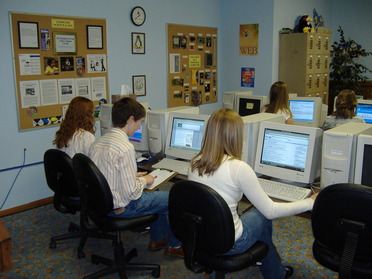 A stock photo of some computers in a class, because that is what tech means, right? A stock photo of some computers in a class, because that is what tech means, right? In the previous post, I wrote about the SAMR model, and how I have understood it so far, having only just discovered it myself earlier this year. If it is the first time you’ve heard of it, I hope that it made sense, and that it has inspired you to go and research authentic technology integration. By way of a brief recap, the SAMR model is a way of thinking about the use of technology in the classroom that breaks technology use into four categories; substitution, augmentation, modification and redefinition. Previously, I wrote about the first two categories, and this post will complete the exploration of the SAMR model. The third category in the SAMR model is modification and it is the first of, continuing the Bloom’s Taxonomy analogy from the previous post, the higher order [technology uses], in the SAMR model. Modification allows for significant task redesign, such as recording a student’s presentation on a student’s iPad, and then using the playback of the recording to assist feedback delivery, providing the ability for the student to see themselves and see specific aspects that you are talking about. This use of technology, the iPad recording, modifies a typical teacher task (providing feedback) transforming the quality of the feedback and the way the students are able to process the feedback. The use of technology in this way is the first where there is any real benefit to the students. Prior to modification, there has been, essentially, no change in pedagogy. All you have done is made things easier for the students. Modification can change your pedagogy, and can improve the students learning outcomes. At the pinnacle of the transformation process, is redefinition, which is using technology to redefine the way a task is completed, in a new and previously not achievable method. The example I would offer of redefinition is the way that my CT has been using iPads to redefine his mathematics teaching. A traditional lesson involves some chalk-and-talk, some modelling, some independent work, and sessions of practicing with varying levels of achievement within a topic, followed by a summative assessment. It might be a week before you get a chance to mark it, identify that student x did not fully understand the concept, but you have moved on to the next topic as dictated by the scope and sequence. The way that he/we are using the iPads redefines the task of maths teaching and learning. We utilise iTunes U to push out content to the students, including an overview of the topic, the learning goals and how the learning goals will be achieved. The content includes a video which contains the explicit teaching, which is made available for the students to watch back as often as they need. We either work through the video as a class, or deliver the explicit teaching through chalk and talk. The students then work through their Mathletics play list, and this is where we reap the real benefits, I believe. The students complete two to four sets of ten-question activity, generated by Mathletics. As the students complete each set of activities, we are able to see their results populate, live, and then with a simple click, Mathletics provides us with groupings of <50%, 50-74%, 75-84% and 85%+. The expectation is mastery (85%+) and Mathletics provides feedback to the students in terms of their results by way of showing not just the results at the end of the activity, but also allowing students to click on a question which will allow them to see the question, their answer and the correct answer. Students also see a bar next to the activity on the topic screen, which will either be red, blue, gold with “Good Work” or gold with “Perfect” on it, and the students want the Gold bar with perfect. We use these live groupings to be able to identify those students who are struggling with the skills, and can straight away either work with them individually, or conduct small group sessions as needed to address the skill deficiencies and ensure deep understanding. Technology is a great tool to have, but that is all that it is, a tool. Without an understanding of how to leverage its potential to change the pedagogy and redefine tasks to maximise student’s learning outcomes, the digital education revolution, whether its funded by governments or parents, will falter and stagnate, as a result of same old same old with more expensive tools. Thank you for reading, and please leave some feedback and share among your PLN. See here for the list of articles in this series. Teachers need to integrate technology seamlessly into the curriculum instead of viewing it as an add-on, an afterthought, or an event. – Heidi-Hayes Jacobs Initial teacher education (ITE) does give you a lot. I certainly feel like it has given me more than some of my peers indicate that it’s given them. But one thing that I don’t feel like it prepared me for was meaningful deployment of technology. Oh, certainly, we were told about SMART Notebooks, and to use ICT meaningfully, but we were not told what this actually meant in different contexts or how to ensure we were doing it.
Then, this year (2014), I walked into my Internship classroom; a Stage Three combined Year Five and Six class with a trial 1:1 iPad Bring Your Own Device (BYOD) system in place. Awesome I thought to myself, iPads! But then I realised that I had no framework for actually enacting pedagogical strategies through an iPad, no point of reference for how it would work in practice, or what could actually be done on iPads other than what I do on my iPhone. I’ve written previously about why I teach, but why I teach does not prepare or assist me to make technology integration meaningful in and of itself. Fortunately, my classroom teacher (CT) is rather progressive, and very much driven by research-based best practice. He introduced me to the SAMR model, developed by Dr. Ruben Puentedura and a way of thinking about EdTech that had never occurred to me before. The SAMR model outlines four ways in which technology can be used in an educational context, with two tiers of use which can be likened to lower and higher order thinking tiers in Bloom’s Taxonomy. The first two ways of utilising technology in the classroom are akin to Bloom’s lower order thinking skills, and are where technology is used only as a substitution to traditional pedagogies, or to augment traditional pedagogy. The second tier of the SAMR model is where technology is used to modify or to redefine the learning activity. This blog post will deal with the first half of the SAMR model, substitution and augmentation, which my CT likened to the lower order thinking components of Bloom’s Taxonomy. The way that my CT described SAMR to me was in comparison to the recent laptop program Australian high schools, formally known as the Digital Education Revolution which, among other things, saw every Year Nine to Twelve public high school student provided with a laptop. Whether it was a success or failure seems to depend on who you talk to (I know some teachers and administrators who are completely against laptops and tablets on the back of the laptop program). My CT said to me that if you ask parents buy a tablet/laptop as part of a BYOD program, such as is being trialed in his classroom, and all you do is used it as a substitution for a writing book or a textbook, that you will not necessarily have improved the learning outcomes, but you will have made the learning outcomes more expensive for the parents. That made perfect sense to me, and I can see that using them substitutionally would annoy parents. I see using interactive whiteboards (IWBs) purely for their projector as being merely a substitution for an overhead projector/tv and VCR or DVD player, and yes, this does happen. Substitution is an easy trap to fall into. You feel that you are using ICT, so you feel like you are contributing to Twenty-First Century Teaching, however, you are not actually changing anything, other than the medium being utilised. Changing the medium is in itself not necessarily a bad thing, but if that is all you are doing, then it is not enough. The next stage after Substitution is Augmentation. This is where the deployment of the technology only utilises a small portion of its potential. The technology is acting as a direct substitution with some functional improvement. An example of augmentation, I believe, would be using the often built-in functions of many e-textbooks available on digital devices, such as dictionary definitions, bookmarking, chapter hyperlinks etc. You have gained some functional improvement, but not really any pedagogical or learning outcome improvement. I have already mentioned that my CT likened substitution and augmentation deployment of technologies as being akin to the Lower Order Thinking phases of Bloom’s Taxonomy because they serve a purpose and are useful, but you will fail to challenge students much by doing so. Next weekend, I will examine the top half, or to continue the Bloom’s Taxonomy analogy, the ‘higher order thinking’ components of the SAMR model; modification and redefinition. I’d appreciate any feedback on this or my previous blog posts, but thank you for reading. See here for the list of articles in this series. |
Categories
All
|
Support |
© COPYRIGHT 2015. ALL RIGHTS RESERVED.
|

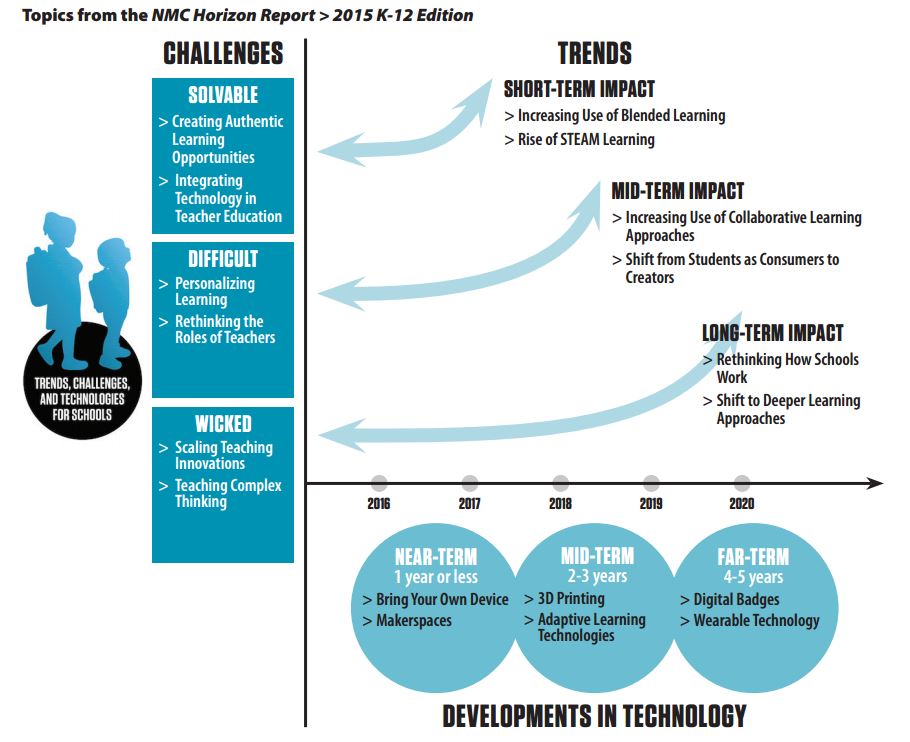

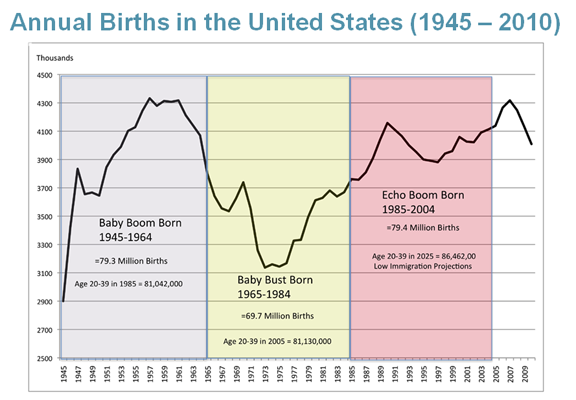

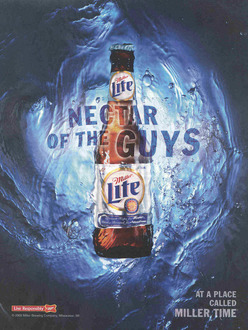

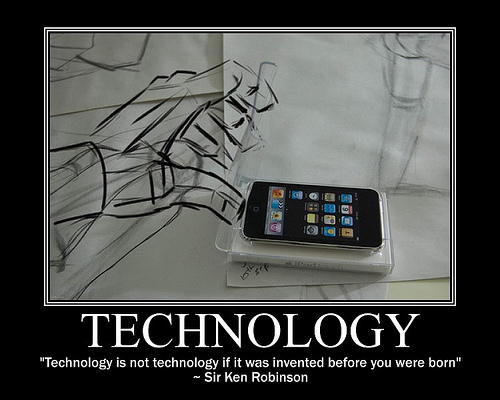

 RSS Feed
RSS Feed